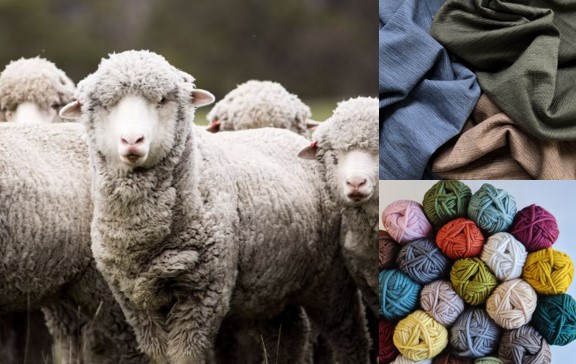

When I first started looking into different fabrics for travel, wool kept coming up as an option. Growing up I detested wool. As a child, it irritated my skin, making it itchy and red. I could not imagine wearing wool in a cold climate, never mind in a warm destination where I am sweating. I resisted the idea of buying wool garments. And then…….poof! I discovered merino wool! I purchased a t-shirt from WoolX since they have a fantastic return policy. I am hooked! I am not itchy wearing it. I have worn wool garments now in all climates, even sweating while hiking. Fair warning, merino wool is not cheap. I have saved up and now own so many garments….socks, t-shirts short and long sleeve, sweaters, sweatshirts, leggings, etc.
Wool clothing offers so many benefits, making it a popular choice for various climates and occasions. Here are some of the key advantages of wool garments:
1. Temperature Regulation
Insulating Properties: Wool is an excellent insulator, keeping you warm in cold weather by trapping air within its fibers. Even in wet conditions, wool retains much of its insulating properties, unlike synthetic fabrics that lose warmth when damp.
Breathability: Wool can also help regulate body temperature in warmer weather. The fibers absorb moisture (sweat) and allow it to evaporate, keeping you cooler and dry, which is why wool is often used in activewear.
2. Moisture-Wicking
Wool can absorb up to 30% of its weight in moisture without feeling wet. This makes it an excellent choice for regulating sweat and keeping you dry. Unlike cotton, which tends to retain moisture, wool pulls moisture away from the skin, keeping you comfortable during physical activity or in varying climates.
3. Odor Resistance
Wool naturally resists odor. The fibers have a unique structure that prevents the buildup of bacteria, which is the main cause of odor. This makes wool clothing ideal for travel, outdoor activities, or long days when you might not have access to laundry.
4. Durability and Longevity
Wool is a strong and resilient fiber, especially when cared for properly. Wool garments can last for years if maintained, making them a sustainable and long-term investment. High-quality wool fabrics, like merino, tend to be softer and more durable than lower-quality wool.
5. Softness and Comfort
Wool used in clothing, particularly merino wool, is softer and finer than traditional wool. Modern wool fabrics have been engineered to be itch-free and gentle on the skin. Merino wool, for instance, is known for its luxurious feel, making it ideal for base layers and next-to-skin clothing.
Merino Wool: Known for its incredibly soft and fine fibers, Merino wool is much finer than regular wool. The fibers are typically thinner (18–24 microns in diameter), which makes it feel smoother on the skin and less likely to itch.
Other Wool: Regular wool (from breeds like Romney, Shetland, or Coarse wool sheep) tends to have thicker, coarser fibers (over 30 microns), which can be itchy or scratchy for some people when worn directly on the skin.
6. Sustainability
Wool is a natural, renewable resource. Sheep produce new fleece every year, making wool a sustainable and biodegradable alternative to synthetic fibers. Wool also requires less energy to produce compared to some synthetic fabrics, contributing to its eco-friendly reputation.
7. Flame Resistance
Wool is naturally flame-resistant. It doesn't catch fire easily, and when it does burn, it tends to self-extinguish, unlike many synthetic fibers. This makes wool an excellent choice for fire-resistant clothing, particularly for certain professional applications.
8. UV Protection
Wool provides a degree of protection against ultraviolet (UV) radiation, blocking harmful rays from the sun. While it may not completely replace sunscreen, wool clothing can contribute to sun protection when worn outdoors.
9. Easy Care (in some cases)
Wool can often be machine-washed (particularly merino wool) and requires less frequent washing than synthetic materials. This is due to its natural resistance to odors and dirt. However, some wool garments may need to be hand-washed or dry-cleaned, so care instructions should be followed.
10. Versatility
Wool can be woven into a variety of fabrics, from heavy, thick winter coats to light, breathable sweaters or summer garments. This versatility makes wool suitable for a wide range of weather conditions and activities.
11. Natural Elasticity
Wool fibers have natural elasticity, allowing them to stretch and return to their original shape without losing structure. This makes wool garments comfortable and resistant to wrinkling, keeping them looking fresh longer.
12. Hypoallergenic (in some cases)
Some types of wool, particularly finer varieties like merino wool, are hypoallergenic and less likely to cause irritation than coarser wool types. This makes them suitable for individuals with sensitive skin or allergies.
13. Aesthetic and Timeless Style
Wool fabrics have a classic, timeless look and feel. Whether it’s a tailored wool suit, a cozy wool sweater, or a stylish wool coat, wool garments are often seen as high-quality, sophisticated clothing items.
Wool clothing provides a unique combination of comfort, functionality, and sustainability. It excels in both cold and warm weather due to its temperature-regulating properties, while also offering breathability, moisture-wicking abilities, and natural odor resistance. Additionally, wool is durable, versatile, and environmentally friendly, making it a popular choice for a variety of clothing needs.
Some merino wool brands to select from are WoolX, Wool&, SmartWool, Ibex, Icebreaker, Darn Tough, Minus33, Meriwool, Wooly, etc. Other brands that carry merino wool garments are LL Bean, J. Crew, Quince, Unbound, Uniqlo, etc. I am not going to lie….my favorite is WoolX. And the company has no idea that I am promoting them.
Try merino wool today!
